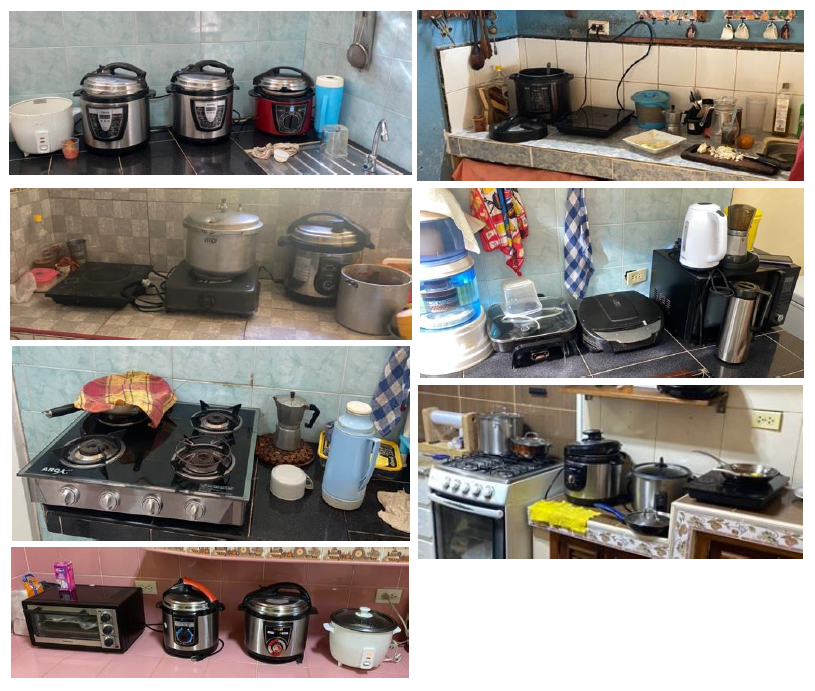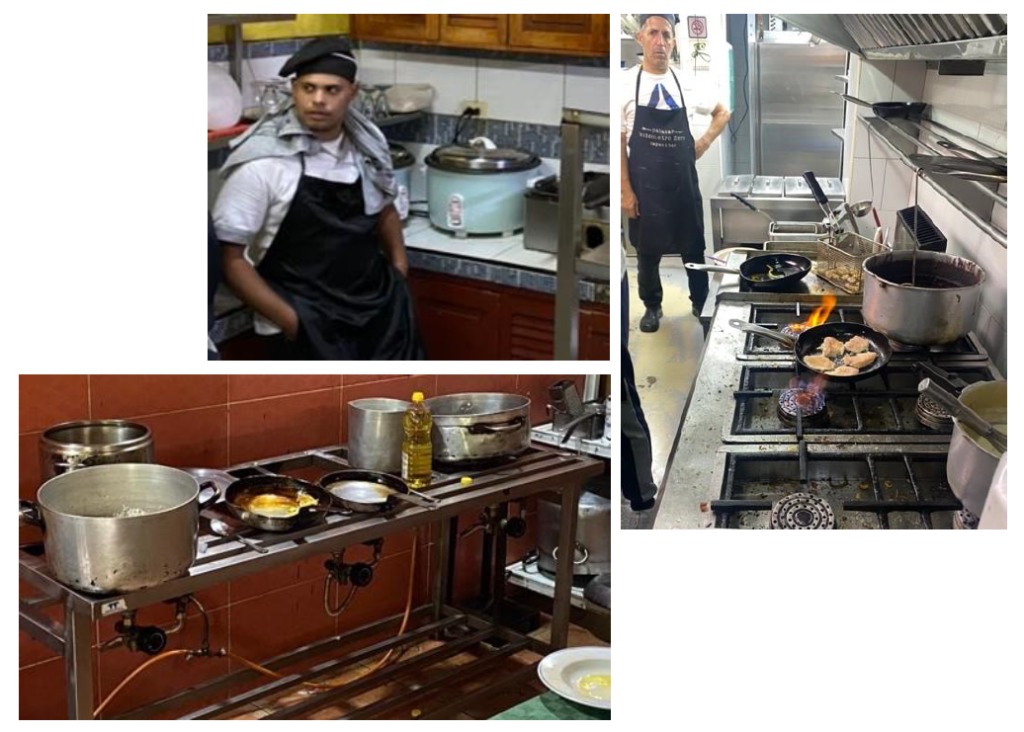
- Date
- 26th April 2023
- Categories
By Dr Nick Rousseau (Loughborough University) (and Sarah Rousseau).
On a recent holiday I found that we weren’t alone in seeing the value of these electric pressure cookers in resource constrained settings.
Despite being on holiday, I’m always keen to have a sneaky look in people’s kitchens, and whilst my wife and I toured the beautiful Caribbean island of Cuba staying in local ‘casa particulars’ (domestic family homes) I was lucky to have a number of opportunities for a peek, and a chat with the local cooks (despite my limited Spanish!).
So, what did I find?
Taking a peak into family kitchens in Cuba.

I was surprised (and pleased) to find that EPCs often take pride of place and have are a permanent fixture on the worktops of many kitchens, they appeared to be much valued in all the homes we visited.
Whilst food is still not plentiful in Cuba, and variety can be limited, the majority of the family meals are prepared and cooked in EPCs, with some families owning more than one device.
At one of our Casa we found that the host was very happy to discuss enthusiastically about their EPCs, having two of different sizes (6 litre and 8 litre), each with a steel pot. They told me that the EPCs cost between 45 and 50 USD to purchase (with no credit terms available), and they are definitely value for money. They also shared that their electricity bill was only around 600 pesos a month (25 USD), making the EPCs an efficient and economical way of cooking for the family and their guests.
But was this love of EPC replicated in commercial kitchens?

Emboldened by the friendliness of the Cuban people, and their willingness to share; I decided to enquire at some of the restaurants we visited.
Again, I was welcomed into the kitchen – despite the fact that often they were busy cooking meals for a restaurant full of people (myself and our tour group included!).
As with the domestic kitchens, I found EPCs in constant use – in particular for making the tasty Cuban Black Bean Soup that we came to love (a constant offering in most restaurants we visited).
If you’d like to try the Black Bean Soup for yourself, I can recommend this recipe, we had a go at cooking it ourselves when we returned to the UK.
One of the things that most people know about Cuba is that they still use the massive old American cars from the 1950s, the nation really seems to embrace the ‘make do and mend’ mentality (mainly as a necessity); and we saw this ethos in action in Havana.
Whilst wandering the streets (my wife is a photographer), we found a workshop where EPCs (and other electrical items) were being repaired whilst their owners waited (image, top).
On returning to the UK I have had the chance to do a little research into the history of electricity and the acceptance of electric cooking devices across Cuba.
The Electrification of Cuba
Prior to 1959 less than 60% of the country was electrified, but following the Revolution the government expanded coverage to even the remotest communities, and by 1989 95% of the country had electricity.
In 1993 it was recognised that energy was in short supply, and the nation embarked on a drive to use more renewable sources – those areas not previously connected to the grid were electrified with solar energy.
Energy Education and Festivals
Under direction of the Ministry of Education, the Programa de Ahorro de Energia por la Ministro de Educacion (PAEME) was introduced in 1997. This programme aimed to educate the population about energy-saving and renewable energy sources. This teaching was integrated into the curriculum of physics, economics, and environmental and health courses. The project also utilised weekly television shows, articles in media, billboards, as well as ‘energy festivals’ aimed at families and children, with songs, poetry and theatre used to spread the messages.
Revolución energética
In 2006 an ‘Energy Revolution’ led Cuba to adoption of more energy efficient appliances – rather than looking for more energy generation, the move was towards a decrease in energy demand – with energy efficient Electric Pressure Cookers playing a large part of this move.
Domestic electricity tariffs were structured in such a way as to encourage conservation, and sales of energy efficient appliances increased – almost 3.5 million rice cookers and more than 3 million electric pressure cookers were sold.
An army of social workers
To carry out their ambitious energy conservation plan a small ‘army’ of trabajadores sociales or social workers were trained and since 2006 13,000 of these workers have visited homes, business and factories to teach people how to use their new electric cooking appliances and share energy saving knowledge.
Key take aways…
Having stumbled across a country that had discovered and embraced electric cooking and Electric Pressure Cookers in particular, long before MECS, it is inspiring to also see how a broader focus on increasing a focus on energy efficiency across the population can work.
…………………………………………
Featured image, top: Repair workshop, Cuba (photo credit: Nick Rousseau).